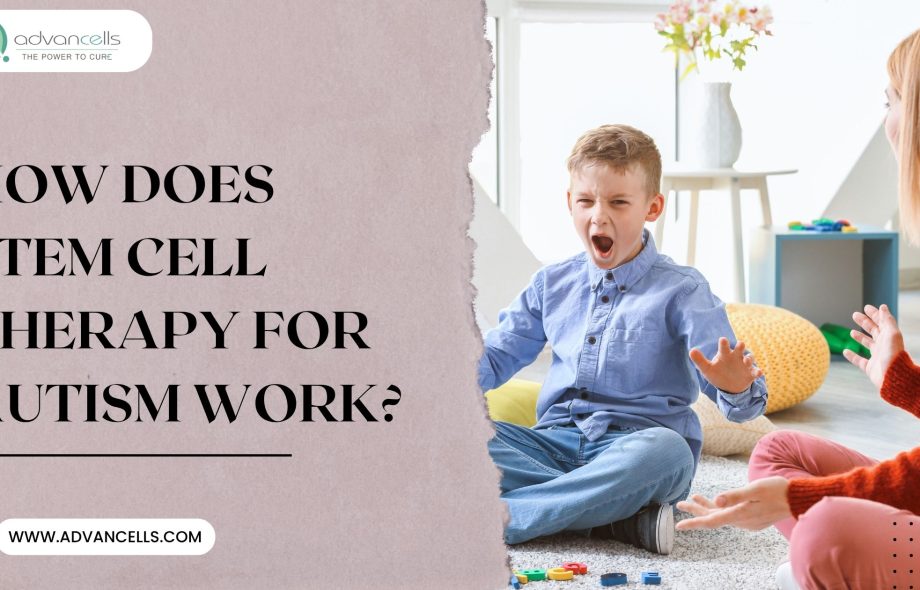A Simple Breakdown for Parents & Caregivers
Autism Spectrum Disorder (ASD) is a condition that affects how a child communicates, learns, behaves, and connects with the world around them. And if you’re a parent, you’ve probably spent countless hours reading about therapies, diets, behavioural programs, and new scientific approaches — hoping to understand what might help your child grow and thrive.
In the past few years, one topic that has drawn global attention is Stem Cell Therapy for Autism. Families often come across this term but aren’t entirely sure what it means or how it works. This blog explains the concept in the simplest way possible, without confusing scientific jargon or unrealistic claims.
Autism and the Body: What’s Happening Inside?
Although autism is usually described as a behavioural or developmental condition, research over the last decade has shown that many children with ASD also have underlying biological issues, such as:
- Chronic inflammation in parts of the brain
- Reduced neural connectivity
- Difficulty in forming or repairing brain cells
- Imbalance in the immune system
These internal challenges can contribute to symptoms such as irritability, attention issues, speech delays, repetitive behaviour, and difficulty adjusting to social environments.
This is where stem cell-based therapies enter the picture — not as a cure, but as a biological support system.
So, What Are Stem Cells?
Stem cells are the body’s “repair” cells.
Think of them as nature’s toolkit — they travel to areas where healing is needed and release helpful signals that reduce inflammation, improve circulation, and support cell repair.
This ability makes them valuable for various neurological conditions, including ASD.

Autism
How Does Stem Cell Therapy Help in Autism?
As in Autism it has been observed that there are multiple changes that can be seen in child. Here’s a clear breakdown of what happens during Autism Stem Cell Therapy, based on current scientific understanding:
1. Calming Brain Inflammation
Many children with ASD experience ongoing inflammation in the brain.
Stem cells help reduce this inflammation naturally by releasing anti-inflammatory molecules. When the inflammation settles, the brain’s communication pathways can function more efficiently.
2. Supporting Healthy Neuron Activity
Stem cells don’t replace brain cells — but they can support existing neurons.
They help improve the environment around nerve cells, promote healthy signalling, and may assist in repairing damaged connections. This can potentially improve learning ability, behaviour regulation, and overall responsiveness.
3. Balancing the Immune System
A large number of children on the autism spectrum show signs of immune imbalance.
Stem cells help restore this balance, which may reduce irritability, unpredictable behaviour, and hypersensitivity.
4. Encouraging Better Brain Connectivity
By improving blood flow and reducing inflammatory stress, stem cells help the brain create stronger connections. This, over time, may reflect in:
- Better eye contact
- Improved attention
- Increase in communication efforts
- More social engagement
It’s a gradual process — not an overnight transformation.
What Does Autism Stem Cell Research Say?
While research is still ongoing, published studies from different countries have reported encouraging observations such as:
- Better attention and focus
- Reduced hyperactive behaviour
- More meaningful social interaction
- Improved understanding of instructions
- Enhanced participation in therapies
- Calmer emotional responses
Parents often describe improvements as “small but steady changes” — changes that help the child become more engaged and confident.
Again, results vary for every child, and no therapy works the same for everyone. But what research does show is that stem cells have a strong role in improving the biological environment of the brain.
Why Are Families Considering Stem Cell Therapy?
Parents exploring Autism Stem Cell Treatment usually have one common reason:
They want to give their child a chance to grow beyond the limitations of traditional methods.
Some choose it because:
- It’s a minimally invasive therapy
- It works alongside OT, speech therapy, ABA, etc.
- It may accelerate developmental progress
- It addresses deeper biological issues
Centres like Advancells focus on personalized, research-driven protocols to ensure the therapy is ethical, safe, and tailored to each child’s needs.
Final Thoughts: Is Stem Cell Therapy a Cure?
Currently, no 100% confirmed studies or research claim Stem Cell therapy as a cure, but it has been clinically observed that there are good results that can be seen from the first session.
What stem cell therapy aims to do is support the child’s neurological and immune system health, reduce internal barriers to development, and create a more responsive, balanced environment inside the brain. When this happens, behavioural and cognitive improvements often become easier and more visible.
For many families, this combination of scientific progress and real-world outcomes offers hope — the kind of hope based on gradual, meaningful change.
 :
https://in.pinterest.com/advancells/
:
https://in.pinterest.com/advancells/

